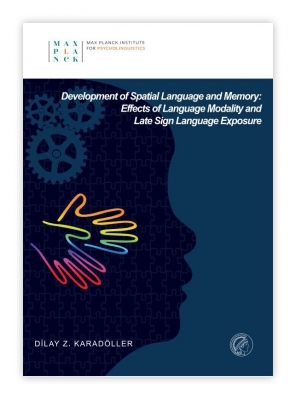Dilay Z. Karadöller will defend her thesis on Monday 17th of January 2022

Children from very early on observe and act on the objects around them. These objects are often configured in various spatial relations to each other. Reasoning and communicating about spatial relations are among the fundamental abilities that children need to develop. Dilay’s thesis investigates the question of how children develop the ability to communicate and reason about spatial relations and which factors influence this development.
Dilay investigated the role of variation in language modality such as in speech, gesture, and sign as well as the role of variation in the timing of language exposure as in late versus early exposure to sign language as novel perspectives to enhance our understanding of the relation between linguistic and cognitive factors influencing spatial language development. She also investigated whether such variations in spatial language use predict subsequent memory for spatial relations. Findings obtained in her thesis contributed to a larger body of knowledge suggesting that the development of spatial language use is shaped by an intricate interplay between the cognitive and linguistic factors. Results have specifically shown that although the variation in language modality and timing of sign language exposure influence development of spatial language use, these variations do not necessarily predict the relationship between spatial language use and spatial memory. Overall, her work calls for possible theoretical and methodological implications to guide future research.
Share this page